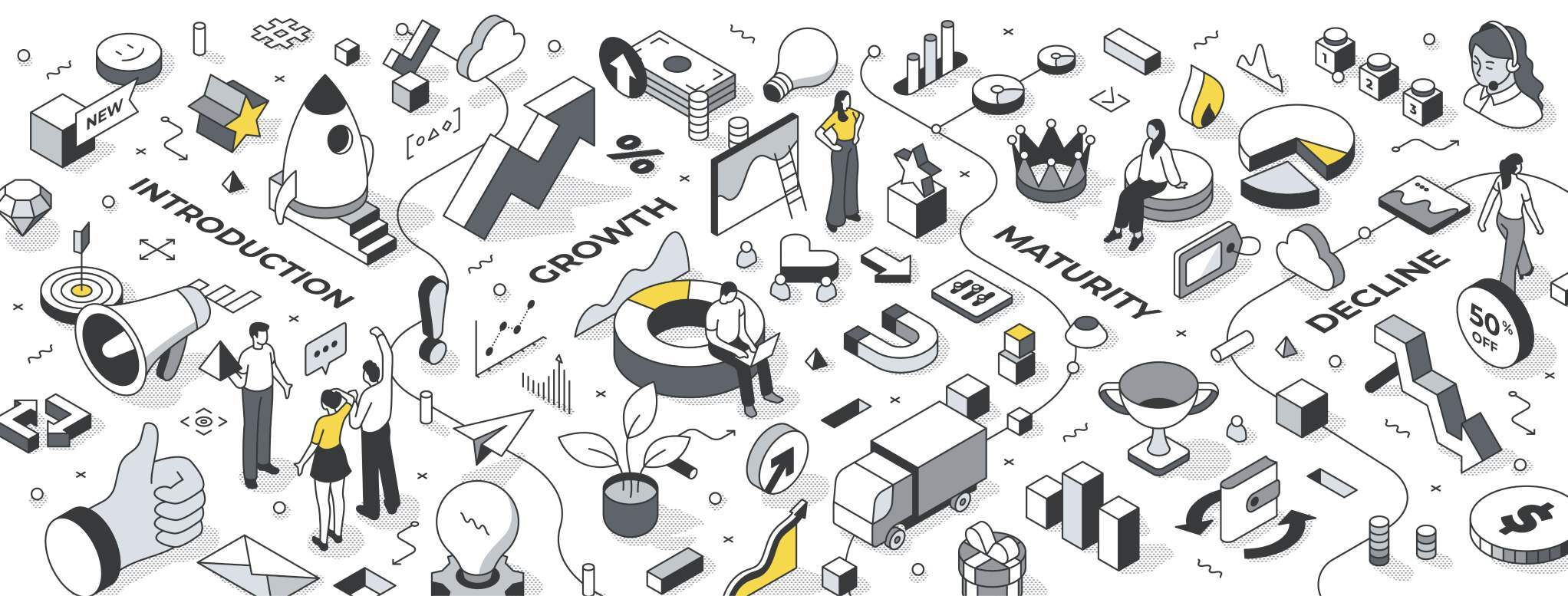For B2B SaaS, first impressions inside your product can make or break growth. In a product-led growth (PLG) model, the product is the salesperson, and if new users can’t quickly discover value on their own, they simply won’t convert or stick around. The stakes are high: studies show that a mere 5% increase in retention can boost profits by up to 95%, yet three-quarters of users will abandon a product within the first week if the onboarding experience is confusing.
| TL;DR: Activation stalls when onboarding ends at a checklist. Map the Minimum Path to First Value, guide users to outcomes in-app, and trigger lifecycle nudges to recover drop-offs. If you want the exact playbook for your product, book a Lifecycle Marketing Maturity Scan. |
On the flip side, 86% of customers remain loyal when onboarding includes helpful education and support. It’s clear that crafting an effective in-app onboarding experience isn’t just a nicety; it’s a fundamental driver of lifetime value (LTV) and growth.
Good onboarding directly increases customer lifetime value
When a new user feels guided to success, they’re more likely to become a long-term, paying customer. As Gainsight emphasises, “the better the onboarding experience a customer receives, the more likely they are to remain a customer for longer and spend more over time.” In other words, positive onboarding is vital for raising LTV.
Why?
Because customers who see value quickly tend to keep using your product and expanding their usage, whereas frustrated users who never “get it” churn out early, slashing potential revenue.
An in-app onboarding experience that converts trial users to paid customers and activates them is the first step toward extending their lifetime with your business.
In-app onboarding is the PLG conversion catalyst
PLG offers speed and scalability; users can sign up for a free trial or freemium plan and start on their own, but it’s a fragile funnel. If your product doesn’t demonstrate value fast, those users vanish.
Industry benchmarks put average free trial → paid conversion rates around 25%, and these rates drop off dramatically when user activation is slow or the UX is unclear.
Giving someone a longer trial won’t help if they can’t find the “aha!” moment; as one report put it, if value isn’t surfaced quickly, users lose interest, and even an extended trial won’t save them. In practice, this model works best when onboarding is easy, clear, and helps users hit that first aha moment quickly.
Conversely, when companies toss users into a complex app without guidance, hoping they’ll figure it out, the result is often disappointment and dropout. “PLG teams aren’t failing because of the model; they’re failing because buyers don’t have enough guidance,” notes one analysis.
Without interactive demos, in-app tours, or tailored onboarding, the path to the aha moment is too murky, and trials stall out as conversions suffer.
The message is loud and clear: guiding users through an intuitive in-app journey is indispensable to drive trial-to-paid conversion in a product-led strategy.
The difference between abandonment and adoption often comes down to onboarding. Consider what happens when onboarding is done right. Even small SaaS firms have seen dramatic improvements by focusing on the trial user experience.
For example, Enzuzo, a startup in the security SaaS space, doubled its free-to-paid conversion rate soon after re-launching with a more robust in-app onboarding process.
And it’s not just startups; even established products benefit from refining this experience.
In one case study, a mobile app’s team redesigned their onboarding flow to be longer but more personalised and value-driven, and they saw trial conversions triple (from 3% to nearly 10% of users). The payoff extended beyond just initial conversion: the forecasted customer LTV for the cohort that experienced the new onboarding jumped by 61% compared to the old, shorter onboarding.
These results underscore a powerful truth: when you invest in guiding and engaging users early, you’re investing in revenue longevity. More users convert, and they stick around longer, increasing their lifetime value.
So, what does an in-app onboarding experience that “converts” actually look like?
It’s certainly not a generic one-size-fits-all product tour or a static help doc. High-converting onboarding is active and contextual. It greets a new sign-up with a clear path to value, often through interactive elements like tooltips, product tours, checklists, and timely prompts.
For instance, onboarding checklists have proven enormously effective at driving users toward key actions. When social media SaaS tool Sked Social introduced an in-app onboarding checklist, users who completed it were over 3× more likely to become paying customers than those who didn’t.
The checklist gave new users a focused to-do list of the critical first steps (connect an account, schedule a post, etc.), turning what could be an overwhelming blank canvas into a guided, game-like progression. By keeping the checklist short and tied to delivering the first core value of the product, Sked Social was able to onboard users faster and more effectively.
In fact, such checklists not only boost conversion rates but also reduce the all-important time-to-value (TTV), the time it takes a new user to reach a meaningful outcome.
Faster TTV means users hit their success milestones sooner, which makes them more likely to continue using (and paying for) the service.
The sooner your product solves my problem or shows me something useful, the less likely I am to churn out during a free trial. Every growth leader should ask: how quickly can a new user feel the value? Your in-app onboarding’s job is to shorten that interval relentlessly.
Tailoring the onboarding flow to each user is another conversion lever
The best SaaS onboarding feels relevant to the individual, not like a canned slideshow. That means dynamically adjusting to who the user is (their role, use case, or industry) and what they’re trying to achieve.
Research consistently recommends segmenting and personalising onboarding for different user personas or cohorts. A product manager and a junior developer might both sign up for your DevOps SaaS, but they likely need to see different things first to get value.
If your app can ask a couple of questions (e.g. “What are you looking to accomplish?”) or detect usage patterns, it can then steer the user down the most relevant path, highlighting the features and use-cases that solve their problem.
This not only prevents overwhelming the user with irrelevant options, but also creates a delightful “they really understand what I need” moment.
And personalisation pays off: users engage more deeply when the experience resonates with their goals. By showcasing the right value to the right user at the right time, you’re far more likely to activate them into a paying customer.
Crucially, effective PLG onboarding also focuses on quick wins and core actions, rather than exhaustive tutorials. New customers don’t need to master every feature on Day 1; they need to achieve one meaningful outcome.
Maybe it’s creating the first project (in a project management tool), sending the first message (in a collaboration app), or analysing the first dataset (in an analytics product).
Guiding users to that first success unlocks an “aha” moment; they experience the product’s core value first-hand. By concentrating your in-app guidance on enabling that milestone, you not only reduce cognitive load, but you also build user confidence. They think, “Okay, this tool is solving my problem,” which motivates them to explore further.
This is why product-led onboarding is often about trimming the fat: remove needless steps, delay asking for information that isn’t immediately needed, and get the user to value as soon as possible. As one framework puts it, help users achieve their first success as quickly as possible.
Every extra form field or optional feature tour you force upfront is another chance to lose the user’s attention. Instead, earn their attention by delivering value early; you can always educate on advanced features later, once the user is hooked.
Let’s not overlook the power of ongoing in-app engagement and nurturing as part of the onboarding experience.
Too many teams consider the job “done” once a user hits that initial milestone or ends their first session. In reality, onboarding blends into adoption; after the first win, users need continuous nudges to deepen their usage and see more value over time.
If you don’t follow through with re-engagement, be it well-timed emails, in-app messages, push notifications, or prompts to try adjacent features, users might still drift away after the initial excitement.
A robust customer activation strategy treats onboarding as an evolving journey, not a one-off event. This means instrumenting your product to listen and respond: if a new user hasn’t returned in a few days, trigger a friendly reminder or offer help. If they’ve used feature A but not feature B that usually correlates with retention, guide them toward B with an in-app tip or tutorial.
The goal is to build a habit and integrate your product into the user’s workflow. Remember that activation is not binary; it’s a spectrum of engagement. Your onboarding experience should segue seamlessly into an ongoing nurture loop that continuously educates and provides value, converting newcomers into power users and eventually, advocates.
In summary, building an in-app onboarding experience that converts is one of the highest-leverage investments a SaaS growth or product leader can make.
- It accelerates the trial-to-paid conversion by aligning your product with the user’s goals from the very first click.
- It slashes time to value, ensuring new customers aren’t left wandering and wondering.
- It increases activation rates and early retention, which flow directly into higher customer lifetime value.
- And it does all this at scale, leveraging your product as the primary vehicle for customer education and value delivery, rather than relying solely on human-led training or chance.
As a result, you not only win more customers, you win more loyal customers who stick around and grow with you.
In the era of PLG, your in-app onboarding experience is your competitive advantage; it’s how you turn signups into satisfied, paying users and boost LTV through superior product-driven engagement. Don’t leave that crucial first mile to chance or to the user’s imagination. Guide them, delight them, and watch as more trial users transform into long-term, revenue-generating customers.
The path to sustainable SaaS growth is paved with great onboarding. Every extra effort you put into making your in-app experience intuitive, supportive, and laser-focused on user success will pay dividends in conversion, retention, and customer lifetime value.
After all, when you help your customers win early, they’ll reward you with loyalty and spend, and that is the real compounding engine of PLG success.
Let’s make in-app onboarding Arise!
If you want real movement, activation to climb, payback to descend, and LTV to ascend, let’s talk. Book the Lifecycle Marketing Maturity Scan and we’ll Assess your funnel, Ideate the highest-leverage fixes, and drive your MPFV to cruise speed. Problems surface when we don’t pay attention; growth emerges when we do. Ready to drive trial-to-paid?
Book time with our team via the form below, and we'll discuss how the maturity scan can help.
Frequently asked questions on In-app onboarding
1) What is an In-App Onboarding Experience, and why does it matter for LTV?
It’s the guided journey inside your product that helps new users achieve their first meaningful outcome. When onboarding shortens time to value and drives activation, more trials convert and more customers retain—directly lifting LTV.
2) Which metrics prove our onboarding is working?
Start with activation rate, time to first value (TTFV), onboarding completion rate, feature adoption, and trial-to-paid conversion. Watch downstream NRR, churn, CAC payback, and LTV:CAC to show financial impact.
-
Healthy signals to aim for over time: onboarding completion >70%, material TTFV reductions, trial-to-paid in the mid-teens or higher, NRR trending >100%, LTV:CAC ≥3:1.
3) How do we reduce TTFV without rebuilding the product?
Design a Minimum Path to First Value (MPFV) and remove anything not essential to that path. Replace configuration with sane defaults and sample data, use contextual guidance at the exact moment of need, and add a goal picker so users start with the outcome they care about most.
4) What’s the fastest way to improve trial-to-paid conversion?
Shorten TTFV and increase activation with outcome-based onboarding, not feature tours. In practice, this means a clear first win, interactive checklists, contextual tooltips that end in an action, and lifecycle triggers that catch users who stall and guide them back.
5) Should we use outcome-based or persona-based onboarding?
Use both, but outcome first. Let users choose “what I want to do now,” then tailor the first-run experience to that goal. Layer persona or plan nuances afterwards. Outcome-based forks reliably lift activation because they remove irrelevant steps early.
6) What are the most common onboarding mistakes to avoid?
The big four: checklist-only onboarding, trial-window myopia (assuming value fits 7/14/30 days), one-size-fits-all flows, and no test/learn loop.
-
Replace “show everything” with progressive disclosure.
-
Instrument events and review drop-offs weekly.
-
Treat onboarding as a living product, not a one-off project.
7) Which SaaS onboarding tools should we consider?
Pair guided product tour software (e.g., Chameleon, Storylane, Pendo) with product analytics (e.g., Amplitude) and lifecycle orchestration (e.g., Customer.io, HubSpot). The combo lets you guide, measure, and message, so value becomes inevitable.
8) HubSpot or Customer.io for PLG onboarding?
It’s not either/or. Use HubSpot for CRM and marketing ops; use Customer.io for granular, product-event-driven email/push/in-app. Together, they power usage-triggered messages that reinforce in-app onboarding and recover drop-offs.
9) How do we build an exec-ready ROI case for onboarding investment?
Tie improvements to finance metrics: model how +activation and −early churn increase LTV, how shorter TTFV speeds CAC payback, and how conversion lifts expand ARR. Commit to a measurable target (e.g., +5pp activation in 90 days) with a test plan.
10) What trial length works best for PLG?
The “right” length matches your TTFV. If users can hit a real win in days, shorter trials work; if setup is heavier, freemium or longer trials are safer. Trial length is secondary—accelerating TTFV is primary.
11) How do we align Product, Marketing, and CS around onboarding?
Create one funnel of truth (activation, TTFV, completion, adoption, trial-to-paid). Share event data across teams, agree on a single activation definition, and run a weekly test/learn cadence. Onboarding succeeds when every function pulls the same lever.
12) Do you have a proof point for cutting steps and increasing conversion?
Yes. With HiBooks, onboarding required 27 steps before any value. We redesigned the MPFV to 6 steps (-77%) and increased trial-to-paid conversions by 18% by adding outcome selection, defaults, and contextual guidance.
13) Where should in-app onboarding meet lifecycle messaging?
Use product events to trigger usage-aware messages. If a user abandons step 3, send a short help email with a deep link back; if they achieve the “aha,” celebrate and suggest the next feature; if they’re dormant, send a light nudge. The experience should feel like one continuous conversation.
14) How do we start, without boiling the ocean?
Run a focused Assess → Ideate → Execute loop on the biggest drop-off in your first-run funnel. Instrument events, define MPFV, ship one improvement, measure the change, and repeat. For a deeper diagnostic, explore our PLG resources and playbooks in the PLG blog hub.
15) What’s the best way to get help if we’re resource-constrained?
Engage a short, high-impact diagnostic to pinpoint your highest-leverage levers. Our Lifecycle Marketing Maturity Scan applies the ARISE “Assess” and “Ideate” stages to your onboarding and lifecycle data, then hands you a prioritised, testable plan to lift activation, conversion, and LTV.
%20small.jpg)




